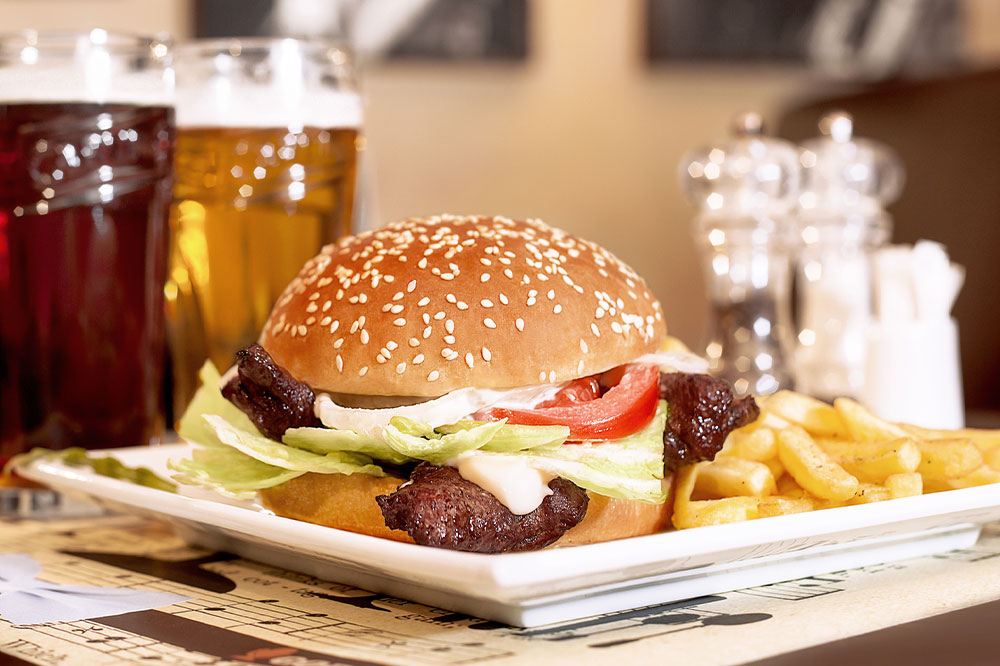Managing diabetes – 7 foods to avoid

Diabetes is a chronic health condition characterized by excessive levels of blood sugar. It is a severe condition that has to be treated properly to avoid future complications. Making nutritional changes can prove effective to a great extent in managing diabetes. Avoiding certain food items in your daily meal plan can help your body regulate high blood sugar better and stay healthy. Below are some food items that are best avoided for people with diabetes.
How do nutritional habits impact diabetes?
A healthy, balanced meal plan comprising nutrient-rich foods low in sugars, saturated fats, and processed foods helps you manage diabetes better. People with diabetes must focus on eating whole grains, fresh fruits, vegetables, fish, nuts, legumes, and healthy fats like olive oil rather than processed snacks or red meats.
Sugar levels in the blood are sourced from carbohydrates taken in by a person. The more carbs eaten, the higher the blood glucose level will be, leading to conditions like diabetes. It necessitates cutting down on certain foods and drinks to keep your sugar in check. However, one must not avoid eating carbs altogether, as they are the body’s primary source of glucose and energy. Instead, eating controlled portions of carbs may help you approach diabetes management healthily.
Foods to avoid to manage diabetes
Here is a list of food items that are best avoided to keep blood sugar levels in check and keep conditions like diabetes at bay.
Dried fruits
While whole fruits can be a nutritious addition to your meal, intake of dried fruits can spike your blood sugar levels. These fruits are dried and processed with sugar content to eliminate the bitter taste. For instance, raisins have three times more carbs when compared to grapes. Even if the package mentions the words “no-sugar-added” or “low-sugar,” it is advised to monitor the portion sizes you eat. For people with diabetes, it is better to stick with low-sugar-containing fruits such as fresh berries and watermelon.
Dairy products
Dairy products provide the body with the necessary vitamins, proteins, and calcium. However, they also contain a naturally-occurring sugar called lactose that spikes blood sugar levels. Full-fat dairy products such as sweetened yogurts are high in saturated fat, which can be hard on your blood sugar level and circulatory system. On the other hand, eating dairy-free alternatives such as coconut milk, nut butter, avocado, soy milk, or almond milk may help a person meet their nutritional needs.
Trans fats
Trans fats are a significant source of calories but lack essential vitamins and minerals. Trans fats are available in peanut butter, creamers, margarine, frozen dinners, packaged and other baked goods, added to extend their shelf period. Even though trans fats don’t affect blood sugar directly, research indicates that they might cause decreased levels of good cholesterol, unhealthy body mass, insulin resistance, and impaired circulatory system functions. As a result, eating trans-fat-containing food may lead to high blood sugar levels. Furthermore, a meal plan rich in trans fats, such as processed pastries and deep-fried foods, can put a person at risk for stroke and heart disease. So switch to healthier alternatives like canola oil and vegetable oils.
Breakfast cereals
While easy-to-prepare cereal like cornflakes or chocolate-filled cereals may be comforting and convenient, many are full of refined carbs and sugars. Combining added sugars with refined carbs will increase the food’s glycemic index, implying that it will cause an uncontrollable spike in blood sugar levels. They are quickly digested, resulting in an increase in glucose levels in the bloodstream. Hence, opt for whole grains like oatmeal or whole wheat toast paired with protein sources like eggs or nuts. These alternatives may provide sustained energy throughout the morning while providing essential nutrients.
Flavored coffee drinks
Research indicates that drinking plain black coffee has certain health benefits, including its significant role in reducing the risk of diabetes. However, flavored coffee is no better than liquid desserts, like milkshakes and custard, with a high concentration of carbs and sweeteners. Thus, it may lead to high blood glucose and unhealthy BMI. Moreover, your brain doesn’t consider flavored coffee a fulfilling nutrient source. It may not change your appetite, increasing your cravings for unhealthy food choices. Hence, it is better to choose espresso or plain unsweetened coffee to prevent high blood sugar levels.
Refined grains
Refined-grain foods may increase your blood sugar levels, including white rice, white bread, white pasta, and other bakery items made from white flour. One should reduce their intake of refined sugars and starches that can lead to high blood sugar by avoiding these heavily processed grains. Opt for nutrient-rich whole grains like barley, quinoa, oats, and millet. Not only are they higher in fiber, but they also take longer for your body to break down. It also reduces the amount of insulin (thus, glucose) needed to process them.
Fruit juices
Although fruit juices seem like a healthy alternative to soda, they often contain added sugars and sweeteners that can cause blood sugar to spike fast. So choose fresh fruits like apples and oranges instead of juices whenever possible. Moreover, the high fiber content of fruits will be lost in the juice form, reducing its impact on better management of sugar and cholesterol levels. Like other artificially sweetened beverages, fruit juices lead to heart ailments, insulin resistance, and unhealthy body mass. Instead of fruit juices, drink plenty of water for hydration and drink lime water as a refreshing dessert to control excessive blood sugar levels.
Eating less-sugary foods is the most effective way of lowering high blood sugar levels. Besides avoiding the food mentioned above, it is essential to maintain a balanced nutritional regime with plenty of fruits and vegetables. A healthy nutritional plan should include nutritious food groups, be low in calories and fat while high in fiber and protein, and effectively prevent or manage diabetes. Moreover, it is advised to monitor your glucose level often and regularly consult a nutritional expert to manage diabetes better.







